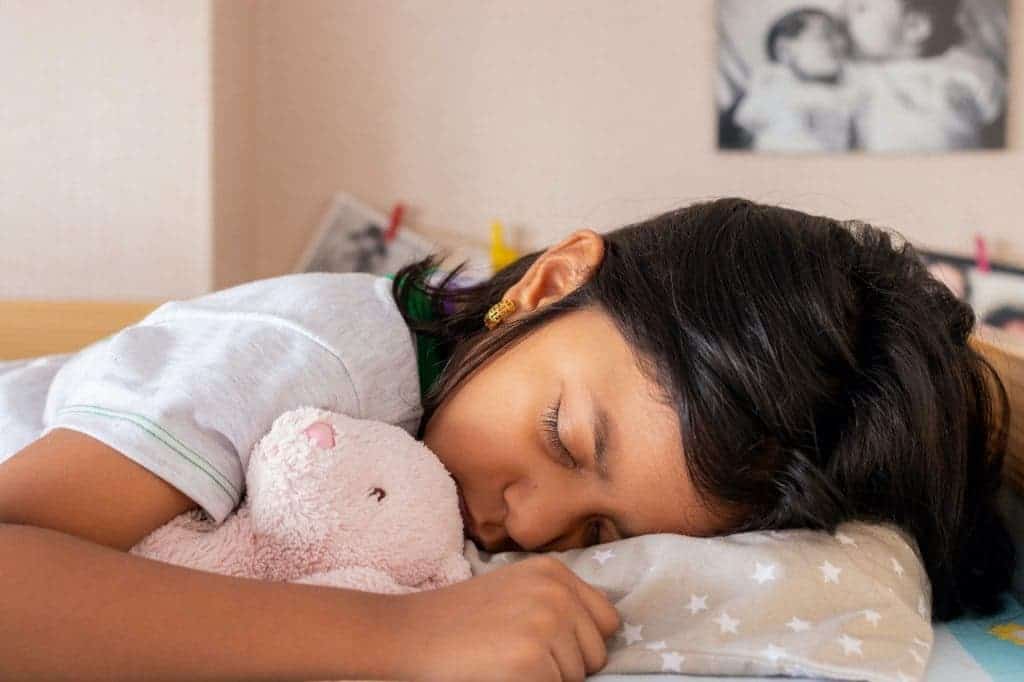Children participating in a mindfulness curriculum at their elementary schools gained more than an hour of sleep per night. The boost in sleep time included an extra 24 minutes of rapid eye movement (REM), the very important dream stage of sleep when memories of the day are consolidated and stored, potentially offering many long-term benefits.

Elementary-age children and pre-teens should get between nine to 12 hours of sleep every night, while teens should sleep between eight to 10 hours, according to the US Centers for Disease Control and Prevention (CDC). However, a 2015 study showed most kids are getting less than the recommended amount of sleep for their age.
“Children and adolescents who do not get enough sleep have a higher risk for many health problems, including obesity, type 2 diabetes, poor mental health, and injuries,”according to the CDC. “They are also more likely to have attention and behavior problems, which can contribute to poor academic performance in school.”
The American Academy of Pediatrics considers sleep deprivation among children an “epidemic,” and recommended that middle and high schools start no earlier than 8.30 am so to allow more sleep time. A steady diet of poor sleep can cause mood disorders such as depressions, cognitive and memory problems, and metabolism disruption.
In the new study, researchers at Stanford University used polysomnography techniques, which measure brain activity, to assess how mindfulness training changes children’s sleep. The course taught children how to manage stress by focusing their attention on the present, but it didn’t instruct them how to get more sleep.
“The children who received the curriculum slept, on average, 74 minutes more per night than they had before the intervention,” the study’s senior author, Ruth O’Hara, PhD, a sleep expert and professor of psychiatry and behavioral sciences at Stanford, said in a statement. “That’s a huge change.”
The researchers recruited over 1,000 third and fifth graders from two school districts in the San Francisco Bay Area. Both had high rates of violence and a history of struggling with food insecurity and unstable housing — a recipe for poor sleep. One community received the intervention and the other served as the control group.
The kids received training in bringing one’s attention to the present; exercises featuring slow, deep breathing; and yoga-based movement. Teachers taught the curriculum twice a week for two years. From the 1,000 kids, the researchers also recruited a smaller group for in-home sleep assessments, done before and after the curriculum started.
At the start of the study, the researchers found that children in the control group slept 54 minutes more, on average, and had 15 minutes more REM sleep per night than children in the group that later received the training. Those in the control group slept about 7.5 hours per night, while those in the curriculum group about 6.6 hours per night.
But the sleep patterns evolved differently as the study progressed. In the control group, sleep declined by 63 minutes per night, while the minutes of REM sleep remained steady – in line with sleep reductions seen in later childhood and early adolescence. Meanwhile, kids that participated in the curriculum gained 74 minutes of total sleep and 24 minutes of REM sleep
“It makes intuitive sense that children who didn’t participate in the curriculum decreased their sleep, based on what we know about what it’s like to be a kid this age,” the study’s lead author, Christina Chick, said in a statement. “I interpret our findings to mean that the curriculum was protective, in that it taught skills that helped protect against those sleep losses.”
The study was published in the Journal of Clinical Sleep Medicine.






